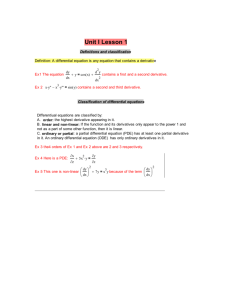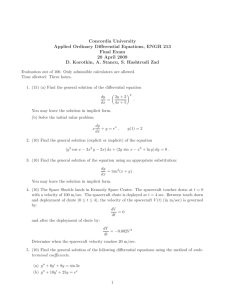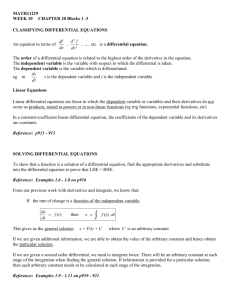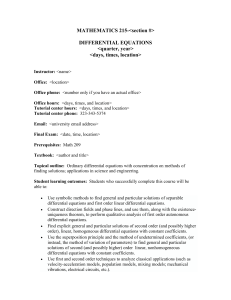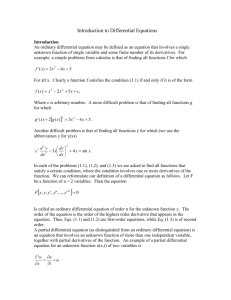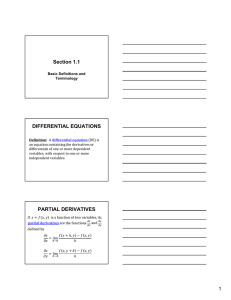Classifying Differential Equations – Section 1
advertisement
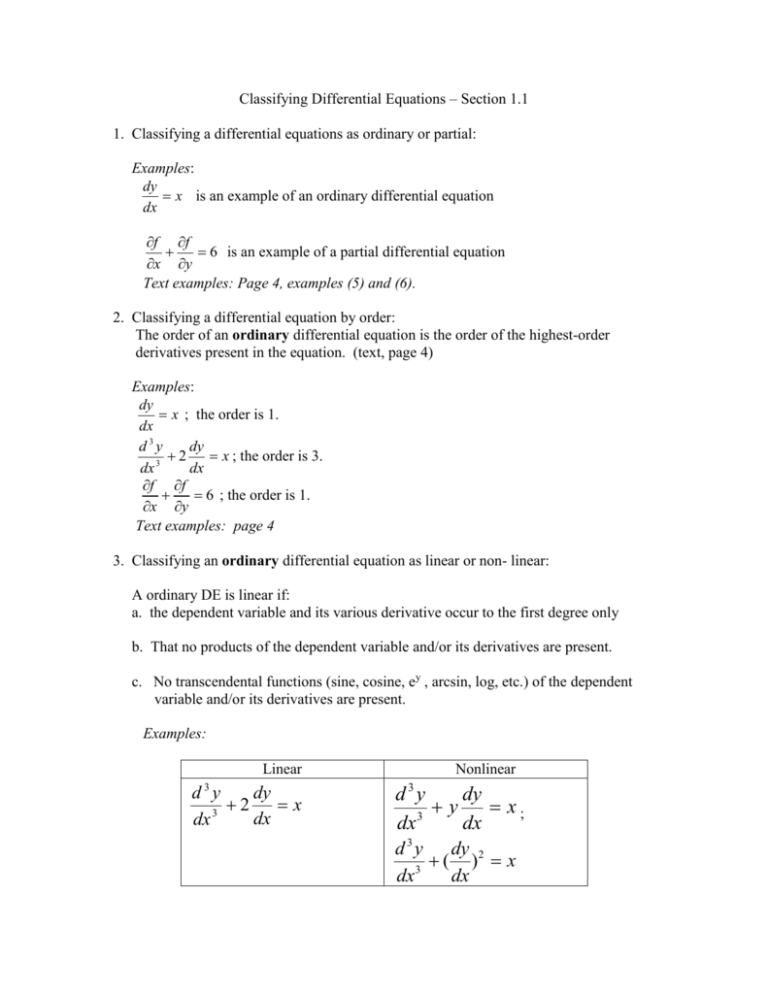
Classifying Differential Equations – Section 1.1 1. Classifying a differential equations as ordinary or partial: Examples: dy x is an example of an ordinary differential equation dx f f 6 is an example of a partial differential equation x y Text examples: Page 4, examples (5) and (6). 2. Classifying a differential equation by order: The order of an ordinary differential equation is the order of the highest-order derivatives present in the equation. (text, page 4) Examples: dy x ; the order is 1. dx d3y dy 2 x ; the order is 3. 3 dx dx f f 6 ; the order is 1. x y Text examples: page 4 3. Classifying an ordinary differential equation as linear or non- linear: A ordinary DE is linear if: a. the dependent variable and its various derivative occur to the first degree only b. That no products of the dependent variable and/or its derivatives are present. c. No transcendental functions (sine, cosine, ey , arcsin, log, etc.) of the dependent variable and/or its derivatives are present. Examples: Linear 3 d y dy 2 x 3 dx dx Nonlinear 3 d y dy y x; dx 3 dx d 3 y dy 2 ( ) x dx3 dx d3y sin x dx 3 d3y sin y dx3 d 3x t e dt 3 d 3x x e dt 3 (text reference, page 5)
